gang
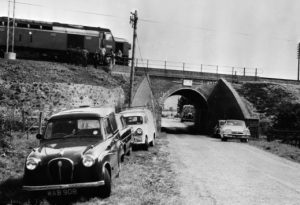
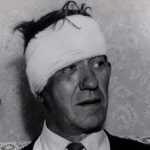 When we think of train robberies, most of us think of the Old West, and bandits on horseback, riding up along side the train, and jumping on. Then, with guns pointed at everyone, they robbed the train, and left the same way they came in. In fact, I think most of us thought that the days of robbing a train were over, and maybe that played to the advantage of the outlaws, because on August 8, 1963, a group of 15 thieves and 2 key informants pulled off one of the most famous heists of all time.
When we think of train robberies, most of us think of the Old West, and bandits on horseback, riding up along side the train, and jumping on. Then, with guns pointed at everyone, they robbed the train, and left the same way they came in. In fact, I think most of us thought that the days of robbing a train were over, and maybe that played to the advantage of the outlaws, because on August 8, 1963, a group of 15 thieves and 2 key informants pulled off one of the most famous heists of all time.
The leader and mastermind behind the heist was Bruce Reynolds, who was a known burglar and armed robber. He was an avid “fan” of the Wild West railroad heists in America, so he decided to see if he could pull something like that off in England. Reynolds and 14 other men wearing ski masks and helmets held up the Royal Mail train heading between Glasgow, Scotland, and London, England. The gang used Land Rover vehicles which had been stolen in central London and marked with identical license plates in order to confuse the police. Unlike the Wild West gangs, this gang used a false red signal to get the train to stop, then hit the driver with an iron bar, seriously injuring him, in order to gain control of the train. The thieves loaded 120 mailbags filled with the equivalent of $7 million in used bank notes into their Land Rovers and sped off to their hideout, which was the Leatherslade Farm in Buckinghamshire, England, to divide their loot. The robbers had cut all the telephone lines in the vicinity, but one of the rail-men left on the train at Sears Crossing caught a passing goods train to Cheddington, where he raised the alarm at around 04:20.
As often happens, the media reports on these things, and before you know it, they are viewed as folk heroes by the public for the audacious nature of their crime and their flight from justice. The first reports of the robbery were broadcast on the VHF police radio within a few minutes and this is where the gang heard the line “A robbery has been committed and you’ll never believe it – they’ve stolen the train!” I’m sure that added to the charm felt by the public, because seriously, who but an eccentric, would steal a train. As always seems to happen, 12 of the 15 robbers were eventually captured. They received a collective 300 years in prison. One of them, a small-time hood named Ronnie Biggs, escaped from prison after just 15 months and underwent plastic surgery to change his appearance. He fled the country and eluded capture for years, finally 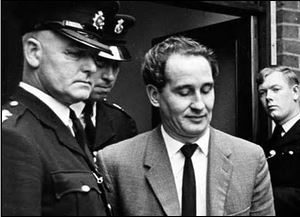
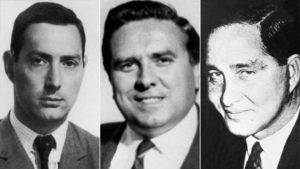 giving himself up in 2001 when he returned from Brazil voluntarily to serve the 28 years remaining in his sentence…a rather odd thing to do, considering the fact that he had successfully escaped. The two Land Rovers used in the robbery were discovered at the thieves’ hideout. A car enthusiast still owns one of them today, and considers it a collector’s item.
giving himself up in 2001 when he returned from Brazil voluntarily to serve the 28 years remaining in his sentence…a rather odd thing to do, considering the fact that he had successfully escaped. The two Land Rovers used in the robbery were discovered at the thieves’ hideout. A car enthusiast still owns one of them today, and considers it a collector’s item.

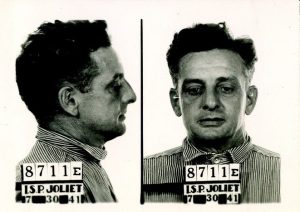 Many things that used to be illegal, are legal today…things like inter-racial marriage, marijuana (now legal in some states), and booze…believe it or not. Booze went from being legal, to being illegal in 1920, and back to legal in 1933. During those years while it was illegal, as with any law, there were those who broke the law and did it anyway. With booze, the problem, like with marijuana…because it was illegal, was no legal source for it. Enter the Bootlegger. Bootleggers, made their own booze and sold it on the black market of the day. The booze, often called Moonshine, was probably stronger than what booze would have been if it had been regulated and made legally, but an illegal product, is made to different standards, and often contains a much higher concentration than if it were legal.
Many things that used to be illegal, are legal today…things like inter-racial marriage, marijuana (now legal in some states), and booze…believe it or not. Booze went from being legal, to being illegal in 1920, and back to legal in 1933. During those years while it was illegal, as with any law, there were those who broke the law and did it anyway. With booze, the problem, like with marijuana…because it was illegal, was no legal source for it. Enter the Bootlegger. Bootleggers, made their own booze and sold it on the black market of the day. The booze, often called Moonshine, was probably stronger than what booze would have been if it had been regulated and made legally, but an illegal product, is made to different standards, and often contains a much higher concentration than if it were legal.
There have been a number of shows and movies that have almost romanticized bootlegging, but in reality, it was a highly dangerous occupation…if it could be called that. I’m sure there were a few non-violent 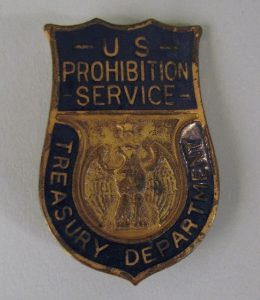 bootleggers…until they had to become violent to protect their stash and their territory. Men like Roger “The Terrible” Touhy, Al Capone, and Roy Olmstead (nicknamed the “King of the Puget Sound Bootleggers”), did everything in their power to bring liquor to those who wanted it…for a price, of course. They had to make a profit and hazard pay was essential too. Early bootleggers smuggled European liquor in, but that quickly became very dangerous, so the bootleggers started to make their own. Every time the prohibition officers caught a bootlegger, the liquor was disposed of…often into the sewer drains. Prohibition officers went everywhere. They were in the cities and the country…anywhere that their intel indicated that a bootlegger had a still in the area. The Temperance Society insisted that they remove every drop of the “demon liquor” from this country. They were convinced that liquor was the root of all evil…so to speak.
bootleggers…until they had to become violent to protect their stash and their territory. Men like Roger “The Terrible” Touhy, Al Capone, and Roy Olmstead (nicknamed the “King of the Puget Sound Bootleggers”), did everything in their power to bring liquor to those who wanted it…for a price, of course. They had to make a profit and hazard pay was essential too. Early bootleggers smuggled European liquor in, but that quickly became very dangerous, so the bootleggers started to make their own. Every time the prohibition officers caught a bootlegger, the liquor was disposed of…often into the sewer drains. Prohibition officers went everywhere. They were in the cities and the country…anywhere that their intel indicated that a bootlegger had a still in the area. The Temperance Society insisted that they remove every drop of the “demon liquor” from this country. They were convinced that liquor was the root of all evil…so to speak.
The bootleggers quickly became Mob leaders with their own gangs, and crossing them quickly became very dangerous. They would even frame or kill their competition, in fact it happened often. Al Capone framed Roger Touhy for kidnapping by his bootlegging rivals with the help of corrupt Chicago officials, was serving a 99-year sentence for a kidnapping he did not commit. He was recaptured a couple of months later. The two men hated each other bitterly, and when it was finally proven that Touhy had been framed, he was released. Three weeks 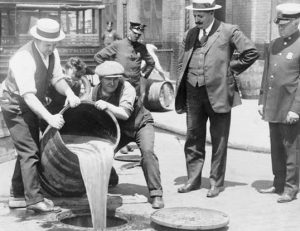
 later as he walked into his sister’s house, Touhy was gunned down. Right before he died, he said, “I’ve been expecting it. The b*******s never forget.” No arrests were made. I wonder if anyone really tried. Those were dangerous times, and one gang often retaliated against another. Even after Prohibition was repealed in 1933, bootleggers did not become extinct, because there were still counties and cities who continued Prohibition. Where there is a law, there are lawbreakers.
later as he walked into his sister’s house, Touhy was gunned down. Right before he died, he said, “I’ve been expecting it. The b*******s never forget.” No arrests were made. I wonder if anyone really tried. Those were dangerous times, and one gang often retaliated against another. Even after Prohibition was repealed in 1933, bootleggers did not become extinct, because there were still counties and cities who continued Prohibition. Where there is a law, there are lawbreakers.

